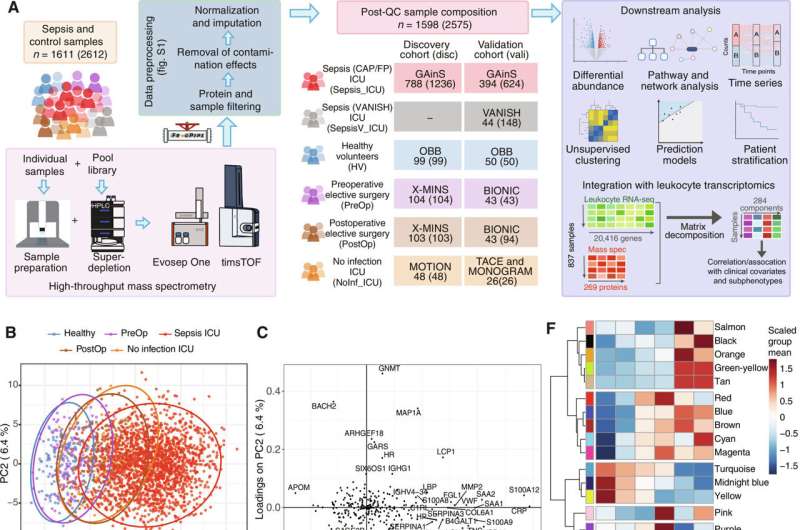June 7, 2024 report
This article has been reviewed according to Science X's editorial process and policies. Editors have highlighted the following attributes while ensuring the content's credibility:
fact-checked
peer-reviewed publication
trusted source
proofread
Pattern of blood plasma protein levels reveals development of sepsis in patients

A large, international team of medical researchers has found patterns developing with certain blood plasma protein levels that can lead to the development of sepsis in patients. In their study, published in the journal Science Translational Medicine, the group analyzed the plasma profiles of hundreds of ICU patients who had developed sepsis.
Sepsis is a condition that arises when the body responds in an extreme way to an infection. It is almost always considered to be life threatening because it can quickly lead to multiple organ failure. It is responsible for approximately 50,000 deaths in the U.K. every year.
Sepsis often comes on suddenly, leading to a medical emergency. If it is not reversed quickly, the patient can suffer permanent harm or death. In most cases, sepsis arises due to a bloodstream infection, often after a patient has been hospitalized for another reason.
In this new effort, the research team wanted to know if there might be any markers associated with the condition that could help doctors diagnose an infection before it develops to such dangerous levels. To that end, they obtained plasma samples from 16,000 patients, some of whom had experienced sepsis while being treated in an ICU and others who had not for comparison.
The researchers measured protein levels for the plasma proteome—all the proteins found in a given plasma sample—using tandem mass spectrometry and liquid chromatography on 2,600 samples. They created a map of the proteome showing how it changed in the time leading up to the onset of sepsis, while it was occurring, and after it had passed, which allowed them to generate general profiles that could be used to identify patients at risk.
They then compared these results with data from another 649 patients. The team discovered that there were three unique subgroups of sepsis patients that had differing plasma proteome profiles, one of which included a group that developed the most severe symptoms. They conclude that some markers may be used to determine if a patient is likely to develop sepsis before it becomes an emergency.
More information: Yuxin Mi et al, High-throughput mass spectrometry maps the sepsis plasma proteome and differences in patient response, Science Translational Medicine (2024). DOI: 10.1126/scitranslmed.adh0185
© 2024 Science X Network


















